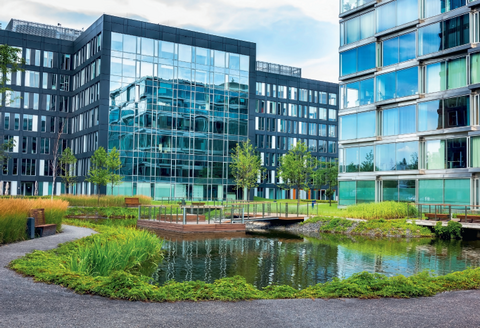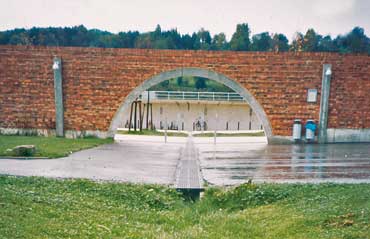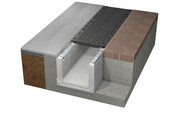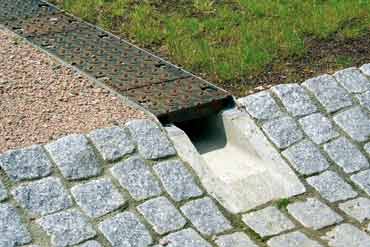Rainwater management | Space-saving seepage
Collecting rainwater
The increasing sealing of settlement and traffic areas leads to precipitation flowing more quickly into sewage systems, wastewater treatment plants and receiving waters. Floods resulting from overburdened canal systems and extending up to floodwater catastrophes dramatically illustrate the effects of continuous soil sealing. At the same time the groundwater level is sinking significantly in many regions, since the soil sealing of the natural surface prevents rainwater from seeping down to replenish the groundwater.
Some of the possibilities for sustainable ecological and economical rainwater management consist of local rainwater utilisation, centralised and decentralised seepage and landscaped roofing. Generally speaking, the possibility of unsealing spaces should be the preferable solution, but design and usage reasons mean that it is not always possible to have rainwater seep directly through unsealed areas. Our focus is therefore on providing solutions for the drainage of sealed surfaces.
Transport for seepage
The collection of sealed area precipitation water entails using corresponding drainage elements to transport the accumulating water to the next retention basin. The drainage element plays a central role in this and must ensure the fast, effective transport of the rainwater, even over large distances. Furthermore, the BIRCO drainage channels also serve as intermediate storage facilities during heavier rainfall.
Appropriate planning in the design of road profiles can ensure that when unusually large floodwaters rise the entire sealed area can be used as a tailback area, which in the best case can prevent the flooding of cellars, parking garages and buildings. The water is transported only a few centimetres beneath the road surface and can be diverted directly into the retention basins, eliminating the need for costly pumping equipment that uses high levels of energy.
Drainage channels
Since the flow of rainwater into drainage channels remains visible, it is easy to monitor. Conventional paved surfaces only possess opening ratios of two to four percent. BIRCO channel systems demonstrate valuable benefits in rainwater management.
- Rainwater is transported quickly and effectively – even over longer distances.
- The channel system services as an intermediate storage facility, allowing additional volume to be absorbed during heavy rainfall and then dispersed later.
- Direct drainage of the water into retention basins, since it only flows in the channel system a few centimetres beneath the road and then seeps into adjoining basins.
- Saves costs and energy.
Productadvies:
Basins and cisterns
Instead of the conventional drainage of surface water into combined sewage systems or separated sewage systems, these days such water is generally seeped into decentralised basins or a linked basins/swales system.
A prerequisite for this approach is that precipitation water is collected near the surface and transported. The aim is to direct the water directly into the basins with as few detours as possible. As its seeps through the topsoil, this water replenishes the groundwater supply.
Rainwater on properties should seep into the ground, evaporate or be used. This benefits the natural water cycle and replaces complicated, problematic drainage into wastewater systems. Flat seepage basins can be used wherever precipitation is drained away only a few centimetres underneath the surface. The site has a natural character, construction costs for moving earth are low and maintenance is reduced to a minimum.





